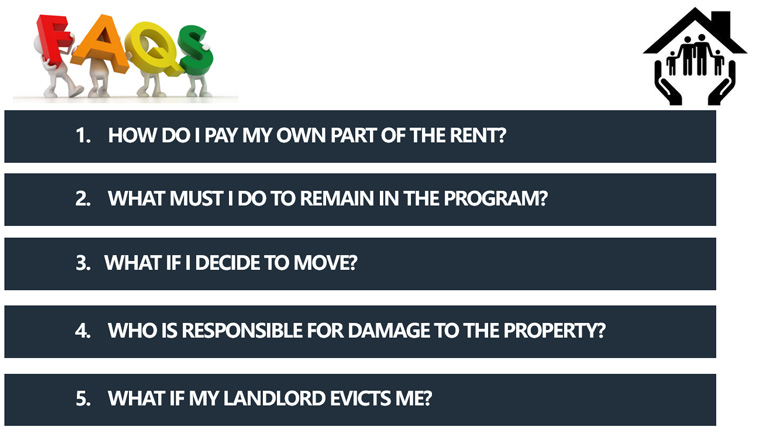The Housing Choice Voucher Program & How it Works
The Housing Choice Voucher Program (HCVP) is a federal housing scheme designed to assist families in the renting of private houses. It is managed by the Department of Housing and Urban Development but administered by the local public housing agencies. In the guidelines, the government takes responsibility for paying part of the rent of individuals who occupy privately owned apartments in the country. The subsidy is paid directly to the landlord, while the tenant completes the rest of the payment. This is in line with Section 8 of the Housing and Community Development Act in 1974, established by Congress, hence they are also referred to as “Section 8 Vouchers” in certain company.
The aim of the program is to provide adequate and decent housing conditions, outside of public housing, for low-income families. Contrary to myths, the Housing Choice Voucher Program covers all types of residential settings, from single-family houses to apartments and townhomes, and not just federal housing projects. So long as you meet the income requirement, apply for a voucher, and obtain one when available and get approval, one can get federal subsidies to live in any private apartment whose landlord agrees to the guidelines of the program. Below is a rather elaborate guide to securing this opportunity.

Who is Eligible for the Housing Choice Voucher?
To obtain the voucher, a series of steps are involved, and the local public housing agency is in charge of the process. As stated earlier, the program is a federal one but it is run locally by the public housing agencies, which work differently from region to region. Although this is a general guide, it is recommended that you visit the website of your local public housing agency to get information about their specific requirements.
Generally, to be eligible for a Housing Choice Voucher, one should be a low-income earner, earning below 30 percent of the median income of their respective area, although in some cases it could be issued to those earning nearly 50 percent. Other possible requirements to meet are citizenship, family size, owned assets, and a host of other things depending on the region concerned. However, to qualify for a Housing Choice Voucher, an online application must be made to your local public housing agency.
How to Apply for the Voucher
The fact that applications for Housing Choice Vouchers are done online goes to show that knowledge of the concerned website is indispensable to the process. Thankfully, there are above 4,000 public housing authorities (PHA’s) across the country, each of which issues these vouchers. The dent, however, is that the forms are usually open for a specific period of time which differs amongst agencies. It is important to note that aside duration and timing, procedural differences also abound. While some agencies run a yearly portal not lasting more than a few days or weeks (usually around January), others stick to once in few years. In some agencies, a waiting list is made available to interested applicants until the next application season.
First, find the website of your preferred local public housing agency, all the easier if you have one in mind already. If not, Google the list of public housing agencies in your region, get the web address, and other contact information that would afford you access to timely information as regards application deadlines, voucher availability, duration, and other relevant stuff. Once you find the website of the public housing authority, search for the section concerning Housing Choice Vouchers (or Section 8 Vouchers). When it opens up and you discover that the application is open, proceed to fill out the form, as explained shortly.

Filling out the Application Form
As stated above, you must have ascertained that the application was running before you proceed to fill out a form. Depending on your public housing agency of choice, the application may be open each year, every other year, or in a different pattern. Every public housing agency has a peculiar procedure for application, but there are connecting threads that run through them all. Generally, your contact information, background data, as well as income status will be required. Some agencies might demand proof of citizenship and income stated in the application form.
The discrepancy that exists in the application process amongst different agencies is evident in the kind of application they offer. While some of them issue an all-online form to be filled and submitted online, some others make arrangements for a downloadable PDF form to be printed, filled out, scanned, and sent back to the agency via email. A few others don’t deal online forms, part of them are those who don’t have a website. In such cases, the applicant should give the agency a call, or send them an email, requesting the form. On receipt, they were to fill out the hard copy form and return to the agency.
The Selection Process
On submitting the form you’re automatically placed on a waiting list with other applicants. Due to heightened demands for vouchers, and without a concomitant increase in fund allocation to the housing project, voucher waiting lists in most agencies are few years long, and new applicants can hardly hope to obtain a voucher. This further lessens the chances of a prospective beneficiary. It only helps that many public housing authorities apply the lottery system in randomly selecting recipients for a voucher, rather than on the basis of first-come, first-served.
While the selection process is designed in such a way that makes for fairness to all applicants, individuals belonging to a particular group in the society may be favored with respect to their situation. Thus, students, elderly people, the disabled, the homeless, and other special cases, get a better chance at being voucher holders. However, since you get only one chance at applying to a housing agency, you could choose to apply to several different public housing agencies across regions to improve your odds. Once you are selected by an agency, you are expected to reside within the concerned region to be able to use the voucher. Successful applicants will have to pass a few verification tests to determine their eligibility and the authenticity of their documents. Afterward, they will be contacted by the public housing agency for directions on how to get suitable housing. At the end of the selection period, some agencies put back the applicants who weren’t selected to the waiting list, while others dissolve the list and resume a fresh one, in which case the applicant would have to start all over again.

Some Frequently Asked Questions:
- How do I pay my own part of the rent?
You are responsible for the payment of your own portion of the rent directly to your landlord. The amount to pay is stated as “tenant rent to owner” in the lease agreement or notification letter of the program. Payment must be made on or before the first day of the month, otherwise, you risk being evicted from the property, and participation in the program may be lost. The program is responsible for its own share of the rent which would pay directly to the landlord on the first day of each month.
- What must I do to remain in the program?
The answer to this is not much. All that is required is that you strictly comply with the Obligation of Household as stated in the Voucher issued to you. At the end of each year of occupancy, if you meet all the requirements and Obligations, your occupancy may be renewed and continued according to the lease agreement. You will be notified prior to this, in order to re-examine your eligibility. The housing unit will also be examined yearly to ensure it continually meets federal housing standards.
- What if I decide to move?
The program covers part of your rent as long as you notify your landlord and program representative (or housing agency) before you move house. The notice must be given within the time period stated in the lease agreement to ensure continuity. However, you must occupy an assisted housing unit for at least a year before moving, unless you are forced to move due to factors threatening your safety and health.
- Who is responsible for damage to the property?
The responsibility of maintaining the rented property in good conditions rests in the hands of the occupant. Failure to do so may attract penalties, what’s more, any willful act that leads to damage to the property, either by the tenant or their guest, is likely to cost them their participation in the program.
- What if my landlord evicts me?
It is possible for a tenant in the program to be evicted by their landlord, as long as the landlord can prove in court that the tenant had violated the rules of conduct, and is deemed fit by the court of law to evict such a tenant. If your landlord has good cause to evict you from their property, you may be denied eligibility to continue in the program.









Leave a Reply